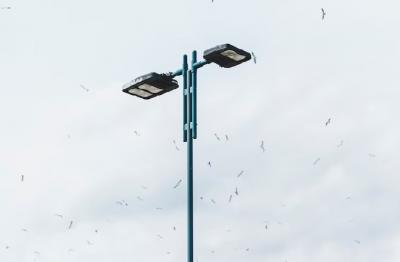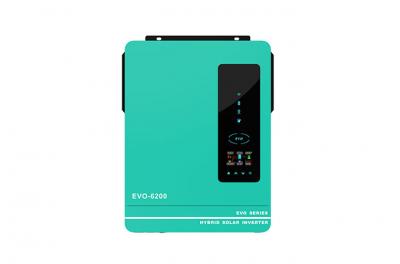
A solar street light is a lighting system that uses solar panels to capture sunlight and convert it into electrical energy, which is then stored in batteries for later use to power LED (light-emitting diode) lamps during the night. These lights are designed for outdoor illumination and are commonly used for street lighting, parking lots, pathways, parks, and other public areas where traditional grid-powered lighting may not be readily available or cost-effective.
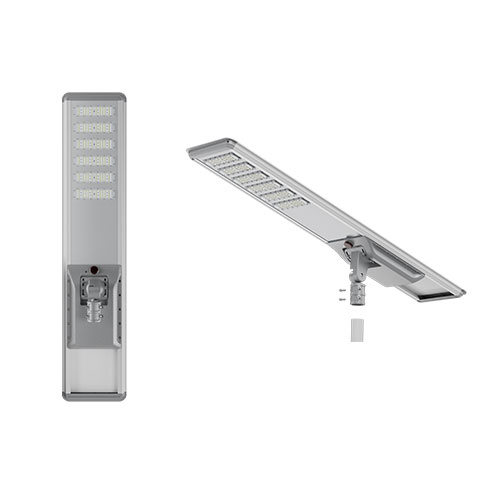
Solar Panels: Photovoltaic (PV) solar panels are installed on top of the street light pole or nearby structures to collect sunlight. These panels contain solar cells that convert sunlight into direct current (DC) electricity.
Charge Controller: A charge controller is used to regulate the voltage and current from the solar panels and prevent overcharging or deep discharging of the batteries. It ensures the batteries are charged optimally and safely.
Batteries: The electricity generated by the solar panels is stored in rechargeable batteries, typically deep-cycle batteries. These batteries store energy during the day to power the lights at night when there is no sunlight.
LED Lamps: High-efficiency LED lamps are used as the light source in solar street lights. LED technology is chosen for its energy efficiency, durability, and brightness. The LEDs are powered by the energy stored in the batteries.
Light Control: A light control system, often integrated with a timer or a light sensor (photocell), is used to automatically turn the LED lamps on at dusk and off at dawn or at a specific preset time. Some systems can also adjust the brightness of the lamps based on ambient light conditions.
Pole and Mounting: The solar panels, LED lamps, batteries, and other components are typically mounted on a sturdy street light pole, which is installed at the desired location. The height and design of the pole can vary depending on the specific application and aesthetic preferences.
There are several different types of solar street lights designed to meet various lighting needs and environmental conditions. Here are some of the common types:
| Type of Solar Street Light | Advantages | Disadvantages |
|---|---|---|
| Split Solar Street Light | - Optimal Solar Panel Placement - Customization - Ease of Maintenance - Scalability - Energy Efficiency - Reliability - Remote Monitoring - Environmental Benefits - Cost-Effective - Off-Grid Capability - Enhanced Lighting Control | - Larger dimensions and shorter lifespan of lead-acid batteries - Complex installation and higher labor costs - Higher electrical hazard risk and susceptibility to theft - Higher long-term maintenance costs - Less aesthetically pleasing |
| All-in-Two Solar Street Lights | - High energy density of lithium-ion or LiFePO4 batteries - Superior efficiency and extended lifespan - Reduced maintenance demands - Resilience against removal and damage - More visually appealing | - Risk of thermal runaways in inferior-grade lithium-ion batteries - Higher price point compared to split solar-powered street lights |
| All-in-One Solar Street Lights | - Simplified Installation - Energy Efficiency - Environmentally Friendly - Cost Savings - Autonomous Operation - Low Maintenance - Customizable Options - Motion Sensor Capability - Grid Independence - Quick ROI - Reliable Lighting - Reduced Light Pollution | - Higher upfront cost compared to conventional grid-powered lights |
Split solar street lights, also known as separate solar energy street lights, are a type of solar street lighting system in which the key components are separated and installed in different locations for optimal efficiency and flexibility.
Adantages:
Optimal Solar Panel Placement: One of the primary advantages of split solar street lights is the ability to place the solar panel in the most sunlight-exposed location. This optimizes energy generation and allows for maximum solar panel efficiency.
Customization: These systems often have modular designs, allowing for customization based on project requirements. You can choose the size and capacity of the solar panel and battery to match the desired lighting output and backup capacity.
Ease of Maintenance: The modular design simplifies maintenance and servicing. If a component needs to be repaired or replaced, it can be done without disrupting the entire system. This reduces downtime and maintenance costs.
Scalability: Split solar street lights are scalable. If you need to increase the lighting coverage in an area, you can easily add more lights and components as required.
Energy Efficiency: Split solar energy street lights typically include charge controllers to optimize the charging and discharging of the battery. This ensures that the system operates at peak efficiency, maximizing energy savings.
Reliability: These systems are designed for reliable and autonomous operation. They continue to provide lighting even in off-grid or remote locations, enhancing safety and security.
Remote Monitoring: Many split solar street lights can be equipped with remote monitoring capabilities. This allows for real-time monitoring of the system's performance and the ability to detect and address issues promptly.
Environmental Benefits: Like all solar-powered systems, split solar street lights are environmentally friendly because they generate electricity from renewable solar energy, reducing greenhouse gas emissions and dependence on non-renewable energy sources.
Cost-Effective: While the initial installation cost may be higher than traditional grid-powered lights, the long-term operational and maintenance costs are generally lower. The energy savings and reduced maintenance contribute to cost-effectiveness over time.
Off-Grid Capability: Split solar street lights can operate independently of the main power grid, making them suitable for areas with unreliable or no electricity supply. This is especially valuable in rural and remote locations.
Enhanced Lighting Control: Many systems incorporate lighting control features, such as timers and sensors, to adjust brightness levels based on ambient light conditions and motion detection, improving energy efficiency.
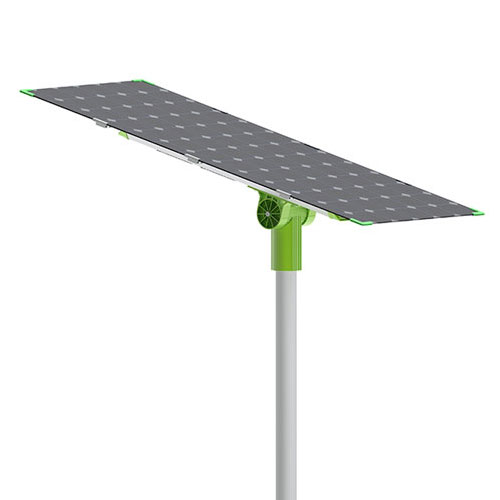
Disadvantages:
Lead-acid batteries find extensive application in these lights; however, they come with larger dimensions, diminished energy density, and a shorter operational lifespan. Consequently, they necessitate frequent upkeep.
The installation procedure may demand additional time and complexity, resulting in increased labor and material expenses. The wiring configuration of split solar energy street lights is also more intricate.
Furthermore, the battery, whether suspended or buried, carries a heightened electrical hazard risk and is susceptible to theft.
Significant portions of your project's operational budget are allocated to ongoing maintenance expenses over the long term.
In addition, the aesthetics are less than pleasing, making them unsuitable for urban projects.
All-in-Two Solar Street Lights" refer to a type of solar street lighting system that consists of three main components: solar panel, lithium battery, LED source. These systems are designed to provide efficient and reliable outdoor lighting while optimizing the placement of the solar panel for maximum energy capture.
Advantages:
Demonstrating enhanced capacity to sustain street lighting, courtesy of the elevated energy density achieved by lithium-ion or LiFePO4 batteries when solar power generation is unavailable.
The rechargeable solar battery exhibits superior efficiency, an extended lifespan, and reduced maintenance demands.
Moreover, the battery exhibits remarkable resilience against removal and damage, even in the face of flooding and excessive moisture, in stark contrast to the vulnerability of hung or buried counterparts in split street light systems.
Its aesthetics also surpass the conventional split street light design, making it a more visually appealing choice.
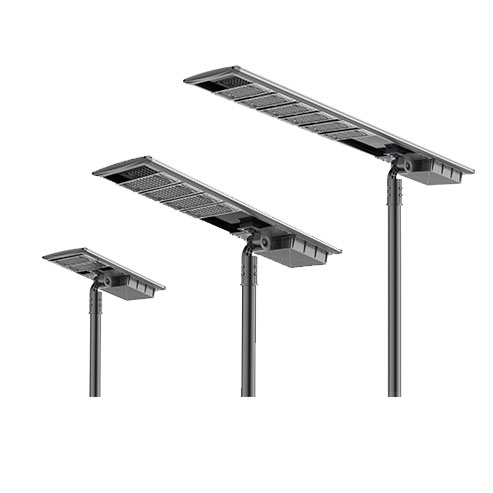
Disadvantages:
Inferior-grade lithium-ion batteries are susceptible to thermal runaways, a potentially hazardous scenario that can result in fires or harm to electronic components and the lighting module.
Typically, they come at a higher price point compared to split solar-powered street lights.
All-in-One Solar Street Lights are a type of solar-powered outdoor lighting system that integrates all the major components into a single, compact unit. These components typically include the solar panel, LED lamp, battery, charge controller, and sometimes a motion sensor. All-in-One Solar Street Lights such as 100w all in one solar street light are designed to provide energy-efficient and environmentally friendly lighting solutions for streets, pathways, parking lots, and other outdoor areas.
Advantages:
Simplified Installation: These lights are designed for easy and straightforward installation since all components, including the solar panel, LED lamp, battery, and charge controller, are integrated into a single unit. This simplifies the installation process, reduces labor costs, and minimizes the need for extensive wiring.
Energy Efficiency: All-in-One Solar Street Lights use LED lamps, which are highly energy-efficient. LED technology produces bright illumination while consuming significantly less energy than traditional lighting sources, resulting in lower energy bills and reduced environmental impact.
Environmentally Friendly: They rely on clean and renewable solar energy, reducing the carbon footprint associated with outdoor lighting. By harnessing sunlight, these lights produce no greenhouse gas emissions and help combat climate change.
Cost Savings: Although the upfront cost of All-in-One Solar Street Lights may be higher compared to conventional grid-powered lights, the long-term cost savings are substantial. These systems eliminate electricity bills, require minimal maintenance, and have a longer lifespan, leading to cost-effective operation over time.
Autonomous Operation: All-in-One Solar Street Lights operate independently of the main power grid. They store energy during the day and use it to power the LED lamps at night, ensuring reliable lighting even in areas with unreliable or no access to electricity.
Low Maintenance: LED lamps have a long lifespan, typically lasting up to 50,000 hours or more, reducing the frequency of lamp replacements. Additionally, high-quality batteries used in these systems are designed for durability and require minimal maintenance.
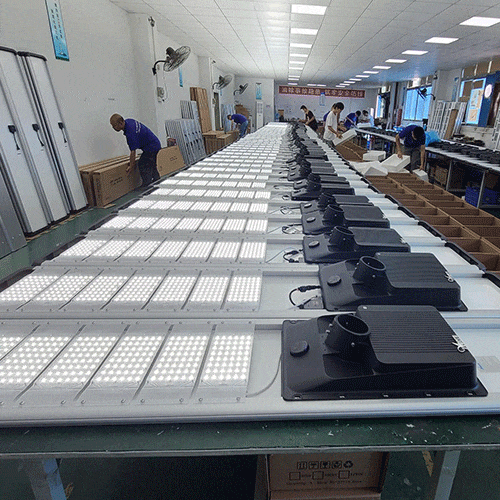
Customizable Options: These lights come in various wattages and configurations to suit different lighting requirements. They can be tailored to provide the desired brightness and coverage for specific applications, from residential streets to large parking lots.
Motion Sensor Capability: Many All-in-One Solar Street Lights are equipped with motion sensors, allowing them to detect movement nearby. When motion is detected, the lights automatically brighten, improving security and conserving energy during periods of inactivity.
Grid Independence: These lights are suitable for remote and off-grid locations where connecting to the main power grid may be expensive or impractical. They offer a reliable and self-sufficient lighting solution in such areas.
Quick ROI: With reduced energy costs, minimal maintenance expenses, and long lifespans, All-in-One solar energy street lights often provide a rapid return on investment (ROI), making them financially attractive for both public and private projects.
Reliable Lighting: They provide consistent and high-quality illumination, enhancing safety and visibility on streets, pathways, parking lots, and other outdoor spaces.
Reduced Light Pollution: All-in-One Solar Street Lights can be designed with features that minimize light spill and glare, helping reduce light pollution and its negative effects on the environment and wildlife.
Solar lighting offers numerous advantages, making it an increasingly popular and sustainable choice for various lighting applications. Here are the key advantages of solar lighting:
Environmentally Friendly: Solar lighting relies on clean, renewable energy from the sun, reducing reliance on fossil fuels and the emission of greenhouse gases. It helps combat climate change and reduces environmental impact.
Energy Cost Savings: Solar lighting systems generate electricity from sunlight, eliminating the need for grid-based electricity. This leads to significant cost savings over time, particularly in remote or off-grid areas.
Low Operating Costs: Solar lights require minimal ongoing maintenance and have long lifespans, resulting in lower operating and maintenance costs compared to traditional grid-powered lighting.
Energy Independence: Solar lighting operates independently of the main power grid, making it suitable for areas with unreliable or no access to electricity. It reduces dependency on grid electricity, especially in remote or rural locations.
Reliable Operation: Modern solar lighting systems are designed for reliability, with robust components and built-in safeguards to ensure continuous operation, even in adverse weather conditions.
Reduced Light Pollution: Solar lights can be designed to minimize light spill and glare, contributing to the reduction of light pollution and its negative effects on the environment, wildlife, and human health.
Enhanced Security: Solar lighting, especially those equipped with motion sensors, improves security by illuminating outdoor spaces when motion is detected, deterring potential intruders.
Remote Monitoring: Advanced solar lighting systems can be equipped with remote monitoring and control capabilities, allowing for real-time status checks, diagnostics, and adjustments, which can be valuable for maintenance and efficiency.
Community Development: Solar lighting projects can empower communities by providing access to clean energy and improving safety and visibility in public spaces.
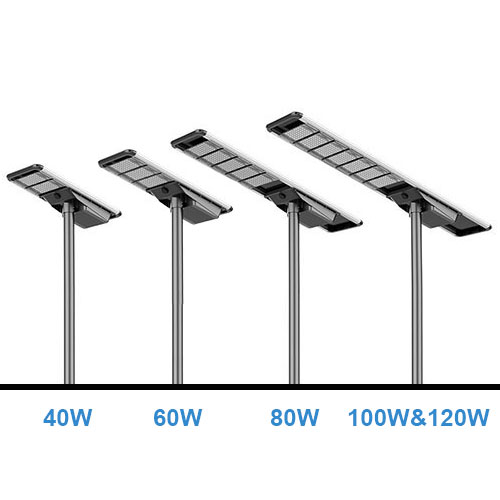
Solar lights have a wide range of applications and can be used for various purposes, both indoors and outdoors. Their versatility and sustainability make them valuable in numerous settings. Here are some common uses of solar lights:
Outdoor Lighting: Solar lights are commonly used for outdoor lighting in residential, commercial, and public spaces, including:
Street lights with solar panels: Providing illumination for streets, roads, parking lots, and pathways.
Garden and Landscape Lighting: Enhancing the aesthetics of gardens, parks, and landscapes with decorative solar-powered fixtures.
Security Lighting: Illuminating outdoor areas to improve security and deter intruders.
Patio and Deck Lighting: Creating ambient lighting for outdoor seating areas.
Pool and Pond Lighting: Adding illumination to water features for safety and visual appeal.
Driveway and Pathway Lighting: Lighting up driveways and walkways to guide pedestrians and vehicles.
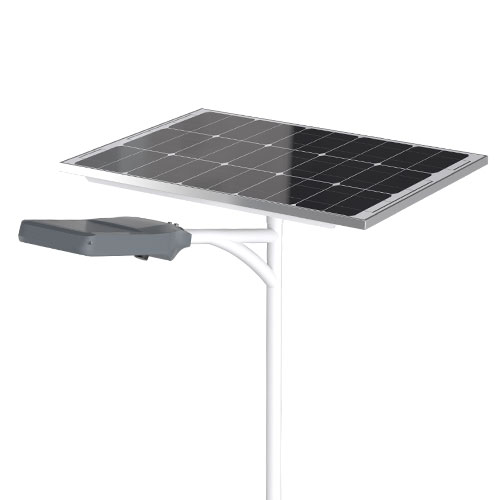
Solar Garden Lights: These lights are designed specifically for garden and landscape lighting, providing accent lighting for plants, pathways, and decorative elements.
Solar Camping Lights: Portable solar lights are ideal for camping and outdoor activities, offering a convenient and eco-friendly source of light in remote locations.
Solar Lanterns: Solar-powered lanterns are often used for camping, emergency lighting, and outdoor events.
Solar Spotlights: These lights are used to highlight specific areas or objects, such as outdoor sculptures, signage, or architectural features.
Solar Floodlights: Solar floodlights provide intense illumination and are commonly used for security purposes, lighting large outdoor areas, and highlighting building facades.
Solar Motion Sensor Lights: Equipped with motion sensors, these lights automatically brighten when motion is detected, making them suitable for security lighting around homes and businesses.
Solar String Lights: Solar-powered string lights are popular for decorating outdoor spaces, patios, decks, and for creating festive lighting during holidays and events.
Solar Wall Lights: Designed to be mounted on walls, these lights are often used for decorative and security lighting on building exteriors.
Solar Path Lights: Solar path lights are low-profile fixtures used to mark walkways and provide subtle illumination along paths and sidewalks.
Emergency Lighting: Solar-powered emergency lights and lanterns can provide essential illumination during power outages and disasters.
Street and Roadway Lighting: Solar street lights are widely used for public lighting in rural and off-grid areas, providing reliable illumination for roads and streets.
Off-Grid Lighting: Solar lights are essential in areas with limited or no access to grid electricity, such as remote villages, campsites, and isolated buildings.
Indoor Lighting: In some cases, solar lights with external solar panels can be used for indoor lighting in areas with adequate sunlight exposure, especially in off-grid or emergency situations.

Q:Are solar street lights worth it?
A: In many cases, street lights with solar panels are a worthwhile investment, particularly in areas with abundant sunlight and high electricity costs. They offer long-term cost savings, reduce environmental impact, and contribute to energy independence. However, it's crucial to conduct a thorough feasibility study and cost-benefit analysis to determine if they are the right choice for your specific project and location.
Q:Which is better, LED or solar lights?
A: LED lights and solar lights are not directly comparable because they serve different functions. LEDs are the light source, while solar lights rely on solar panels and batteries to harness solar energy and provide illumination. In practice, LED lights are frequently used in solar lighting systems to achieve energy-efficient and reliable outdoor lighting solutions. Therefore, the two technologies are complementary, and the choice between them depends on the specific lighting needs and energy source considerations of a given project.
Q:How long do solar street lights last?
A: A well-designed and well-maintained solar street light system can provide reliable lighting for at least 10 to 15 years or more, with some components requiring replacement or refurbishment during that time. The specific lifespan will depend on the quality of components, maintenance practices, and local environmental conditions.
For samples, full by T/T in advance; for bulk order, 30% deposit by TT in advance, balance by TT before shipment. The L/C is acceptable for big order. It can be negotiable.
Yes, Anern supplies solar street lighting solutions as part of its solar energy product portfolio, including integrated solar-powered lighting systems for public and infrastructure applications.
Yes, Anern is a solar inverters manufacturer, as confirmed by their proprietary product lines and industrial capabilities.
As one of China's leading solar power inverter manufacturers, Anern designs and produces multiple inverter series, including:
AN-SCI-PRO Series: Featured on dedicated product pages with factory production images
AN-PVI Series: High-capacity inverters (6000W-10000W) offered commercially
AN-SCI-EVO Series: Hybrid inverters catering to grid-tie/backup needs
Off-grid parallel inverters: Designed for areas with unstable/no grid access
Their inverters incorporate:
Independent R&D - Core technologies developed in-house
Industrial scale production - Manufactured in 30,000+ sqm factories
Global compliance - Certified to meet international standards (CE, ROHS, TUV)
Anern supplies lithium battery energy storage solutions designed for solar applications, including residential, commercial, and off-grid solar energy storage systems integrated with solar inverters.
Generally 3-10 years warranty , vary from different items.
